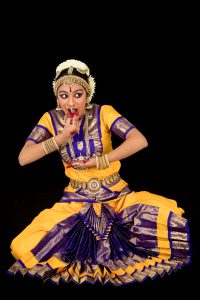Did You Know What’s Most Needed In A Dancer’s Diet?
Diet is the key to keep dancer’s mental health and physical health at its best. A dancer keeps their body toned and limber through a proper balanced diet.
Nutrients are divided into macronutrients and micronutrients. Macronutrients (carbohydrates, proteins and fats) are needed more in quantity in comparison to micronutrients (vitamins and minerals).
Macro nutrients especially carbohydrates play a major role in giving energy to the performers. There are three different possibilities of physical energy expenditure for every dancer – dance class, dance rehearsal and the final performance, along with their daily routine. Depending on their day’s schedule, the energy intake should vary and the diet plan should not be consistent and monotonous. Carbohydrate intake should be 55-60% of the total calorie intake.
Breakfast plays a major role in dancer’s life.
Eating a small meal or breakfast before morning dance class will help you focus in class and set you on daily routine without excessive fatigue.
Before rehearsal, a dancer should have high carbohydrate meal like cereals and grains, oat meal, bread, pasta, Noodles etc. That helps in energy flow for the rehearsal without dizziness and tiredness.

Carbohydrates from food are broken into simple sugar and then stored in the liver and the muscle. The amount of glycogen stored will help in long lasting performance. The body utilizes glycogen quickly and hence the demand for glycogen increases. Small meals of carbohydrates will replenish muscles by restoring glucose in the form of glycogen.
Fruits are monosaccrides which gives instant energy for performance and also helps in storage of energy. 3-5 servings of fruits should be recommended for a day. It can occupy 50% from total carbohydrate intake.
Complex carbohydrates supplies long lasting energy by slow absorption of glucose in to the bloodstream. Fibre slows the digestion of carbohydrates, resulting in a steadier release of glucose and also reduces hunger pangs.
Consuming carbohydrate rich food is important for providing energy, but should be combined with protein and healthy fats for optimum performance. By combining protein with carbohydrate, the blood sugar levels rise is slower than compared to consuming carbohydrate rich food alone.
Protein intake should be 20% of your total calorie intake. Having protein shots with small intervals helps in regulate muscle mass and also prevents cell damage. Protein (amino acid) enters the brain and stimulates it to produce neurotransmitters -dopamine and norepinephrine to promote alertness and activity. Protein stimulates the brain and guides and influences the building of nerve cells.
Before class, rehearsal and performance.
Eat breakfast
Eat breakfast combination of carbohydrates and proteins.
Have fresh fruit juices during class
Have small meals frequently.
After class, rehearsal and performance
Eat within 40 minutes after class
Carbohydrate and protein at 4:1 ratio
Hydrate yourself
Eat whole food (complex carbohydrates)
Fats should be in unsaturated form to get Essential fatty acids (EFAs). These EFAs come from oils in foods such as fish, flax, avocado, nuts and seeds. They are essential because the body does not produce them. Foods containing the omega 3 fatty acids, EPA and DHA have shown to be most effective for this purpose. Fat intake should be 10-15% from total calorie intake.
While practise and performance, plays a vital role in a dancer’s life, equal importance has to be given to the diet throughout a dancer’s life.
LAVANYA A.
NUTRITIONIST

